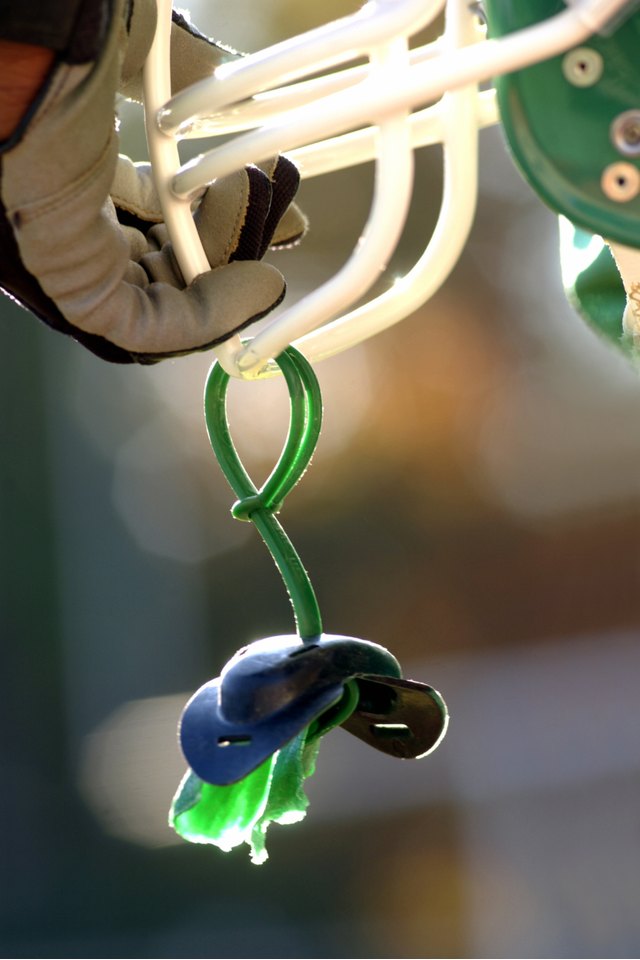How to Attach a Mouth Guard to a Football Helmet

Mouth guards are mandatory for youth and high school football players. While coaches and mouth guard manufacturers often tout the benefits of mouth guards, saying that they also protect against concussions, there is no evidence supporting this, according to researchers at Boston University. Highly recommended by dentists, mouth guards are designed to protect the mouth and teeth from injury during contact sports. Players wearing braces should wear special mouth guards designed for braces. A mouth guard usually has a strap, or lanyard, to attach it to the helmet's protective cage, preventing it from popping out during the game.
Put the mouth guard in the player's mouth.
Place the football helmet on the player's head. Fasten the chin strap.
Pull the strap on the mouth guard under the bottom bar of the cage. Leave a little slack on the strap between the player's mouth and the cage, so the mouth guard isn't pulling at his teeth.
Wrap the end of the strap up and over the bottom bar of the cage.
Insert the end of the strap through the hole closest to the cage. Pull the end of the strap tight, so it's secured to the bar.
Check with your player to ensure that the mouth guard is comfortable and secure in his mouth.
Tips
Mouth guard straps vary; check the manufacturer's instructions for details on that particular brand. If your player has dental issues or braces, his dentist can make a specially fitted mouth guard that accommodates his needs.
Warnings
Never cut a mouth guard to make it more comfortable; modifying the mouth guard reduces its protective benefits to the player's mouth and teeth.
References
- Animated-Teeth.com: Mouth Guards: Sports Mouthguards / Football Protectors / Athletic Mouthpieces
- Boston University: Helmets and Mouth Guards: The Role of Personal Equipment in Preventing Sport-Related Concussions
- Hillsborough Dukes Pop Warner Football and Cheer: The Dukes Guide to Tackle Football Equipment
Resources
Writer Bio
With degrees in fine and commercial art and Spanish, Ruth de Jauregui is an old-school graphic artist, book designer and published author. De Jauregui authored 50 Fabulous Tomatoes for Your Garden, available as an ebook. She enthusiastically pursues creative and community interests, including gardening, home improvement and social issues.
